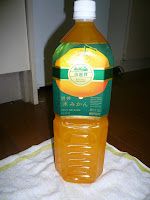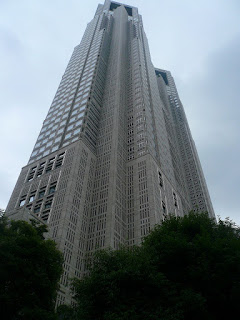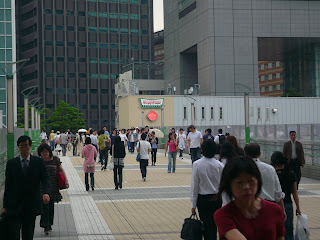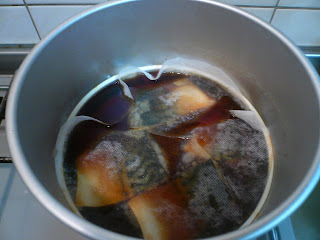
I was having a lot better time than the folks in Iwate prefecture, that's for sure! I was on a train at the time of the earthquake, so I didn't even feel it. Had I been in my apartment, I would have felt it.
I went to Mt. Mitake (御岳山) in Chichibu Tama Kai national park. It's actually in the part of the park that is part of Tokyo, but you wouldn't know it to look at it!
Here is a map of Japan. The northeast marker is my apartment. The southwest marker is Mt. Mitake. If you enlarge the map, you will see Morioka further north. The epicenter of the earthquake was in the soutwest corner of Iwate prefecture, which is the prefecture that Morioka is in.

It took me over four hours to get there. I went by train from Karasuyama to Mitake town. Here is the train from Ome to Mitake. You can tell which side is the scenic one!
Then I took a bus to the cable car, a cable car to the lift, and more steps from the lift to the shrine.

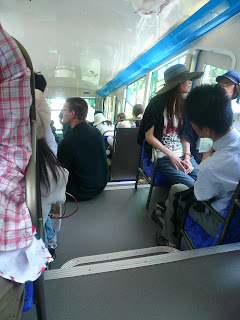
Here are pictures of the cable car. It starts at 828 meters. Rob will remember cable cars.

Here is a picture of the lift seats. Nothing keeps you on except your own good sense.

The view from the mountain was great! On a clear day (not yesterday) you can see Tokyo tower and Mt. Fuji, if you know where to look.

Finally, here is the shrine. Shinto shrines and Buddhist temples coexist nicely in Japan. Often, they are right next to each other. Most people are both Shinto and Buddhist. Shinto ceremonies include weddings (although many people who are not Christian get married at churches or at chapels) and Buddhist ceremonies include funerals.
A nice man took my picture for me. I'm dressed for hiking!



After looking at the shrine I went hiking, looking for one of two waterfalls. I went to the less impressive one because it was closer. I was concerned about catching trains since I'd missed my connection at Shinjuku station. It's the busiest train station in the world in terms of passengers, so I don't feel too badly. Still, I didn't want to get stuck in Hoshakuji with no way to get to Karasuyama. So I went down this trail quickly. And down, and down some more.

I really paid for it when it came time to go back up! And I don't know if I didn't go far enough (the map said 15 minutes) or the water was low, but there wasn't much of a waterfall.
Still, it's a very nice park. If I went again, I'd arrange to stay overnight in Tokyo before and after, so I wouldn't have to rush.
I got back to Shinjuku earlier than I thought I would, so I tried to find Kinokuniya Bookstore. I couldn't find it quickly, and really just wanted to rest so I went back to Karasuyama. So, Shinjuku will be another trip!

Usually, I would have stopped for gyoza and a beer in Utsunomiya. The train from Shinjuku to Omiya was so crowded that they'd have to push another person in. When I could finally sit down on the train, I slept a bit.
Sorry about the sloppy formatting -- the pictures made it hard to get the paragraphs to fit in neatly.
 "Evryday Happily
"Evryday Happily The front:
The front: "Luxurious feeling of the best quality
"Luxurious feeling of the best quality





